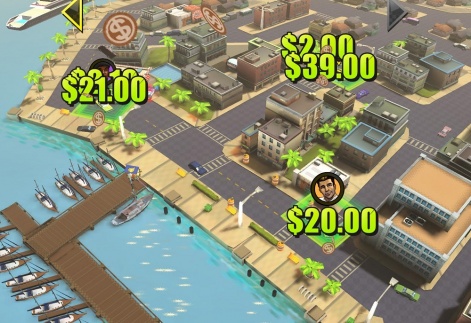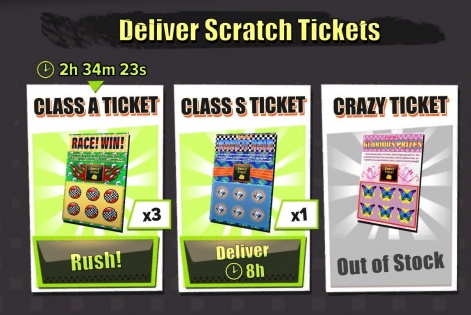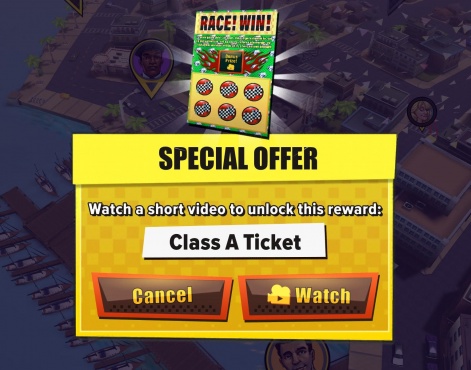Welcome back to the In-App Purchase Inspector - our regular look at free-to-play games from the consumer's perspective.
In each instalment, we consider the incentives or pressure applied to make in-app purchases, their perceived value, the expansion offered by IAPs and the overall value of the experience.
The end goal is to see whether the game makes a good enough case for us to part with our cash, or whether players are content - or engaged enough - to 'freeload'.
This time we're taking a look at Crazy Taxi Gazilionaire, Sega and Demiurge Studios' free-to-play clicker revival of the madcap Dreamcast favourite.
All I Want
Sega clearly sees Crazy Taxi as a franchise with potential in the free-to-play mobile space.
Having previously gone down a more traditional route with lane-based driving game Crazy Taxi: City Rush in 2014, it certainly raised a few eyebrows when an idle clicker with the Crazy Taxi name was soft-launched in January.
But though it was initially difficult to reconcile Crazy Taxi's arcade purity with a genre that involves little more than racking up virtual currency by occasionally tapping the screen, Gazillionaire pleasantly surprises. Rather than playing the role of the cabbie themselves, here the player is cast as the operator of a taxi firm in a city dominated by driverless robo-cabs, upgrading their fleet and hiring new drivers by racking up fares. It's certainly a different Crazy Taxi, but it retains the personality for which the original was so loved. Fare game Like in all idle games, Gazillionaire is built around the accumulation of soft currency, which is in turn ploughed into upgrades to make that accumulation more efficient, ad infinitum. Here, as in the original, this currency is represented simply in dollars. Icons representing passengers appear on a top-down view of the city, which when tapped sends a car out to collect and deliver them to their destination. Each of these adds cash to the kitty, which is spent on upgrading vehicles for higher fares. More complex is the act of recruiting drivers. Acting like units in Clash Royale, driver cards can be upgraded using duplicates, thus enabling them to generate higher fares. Each can only be used in one specific region. Road to Gazillion These cards are often given as rewards for levelling up a vehicle to a certain point, but can also be earned through Scratch Tickets. Presented like a scratch card, each of these offer six random rewards. They too are occasionally given as rewards for meeting objectives or as part of an incentivised ad offer - more on that later - but Class A Tickets take four hours to unlock and Class S Tickets take eight hours. Like in Clash Royale, only one can be unlocked at a time, unless the player is willing to either watch video ads to reduce the wait by one hour or pay hard currency to circumvent the timer entirely. Diamonds are the hard currency, with bundles ranging from $1.99 for 80 to $19.99 for 1,100. These can be used to buy Class A, Class S and Crazy Tickets - 50, 250 and 750 Diamonds respectively - as well as either instant cash or a cash doubler for a fixed period. View to play $19.99 is rather low for an upper tier in a modern free-to-play game, and this says a lot about the game's attitude to free-to-play monetisation. Rewards are plentiful and generous, with the number of Tickets, boosts and even Diamonds you can receive for free relatively high. Instead, the game builds around extensive incentivised video ad integration. Making it part of the core loop, there are blimps that periodically fly over the city. When tapped, they either offer a cash reward up-front, or they offer something much larger - a cash doubler, Diamonds, or Tickets - in return for watching a video ad. Elsewhere, when the player returns to the game after a period away, the entire haul that's generated in their absence can be doubled with a video ad. The rewards are more than sufficient to ensure that these ads never feel intrusive, and each is also preceded with a fake splash-screen ad that pays loving homage to other titles in Sega's back catalogue - from Golden Fax to Altered Beets. This is the kind of care and attention that's so rarely paid to the establishment of monetisation mechanics within the game world, and it goes a long way. Crazy Through Idle games don't tend to be aggressive with monetisation, and Crazy Taxi Gazillionaire doesn't buck this trend at all. Diamonds are abundant, pressure to spend is pretty much non-existent and video ads are made to feel like a worthwhile time investment rather than a chore that takes away from the experience. Add to that a vibrant personality worthy of Crazy Taxi's legacy, and it's hard to imagine even the most die-hard of fans taking exception to this F2P reimagining.Gazillionaire retains the personality for which the original was so loved.

Driver cards can be upgraded using duplicates, enabling them to generate higher fares.

$19.99 is rather low for an upper tier in a modern free-to-play game.

It's hard to imagine even the most die-hard of fans taking exception to this F2P reimagining.






















